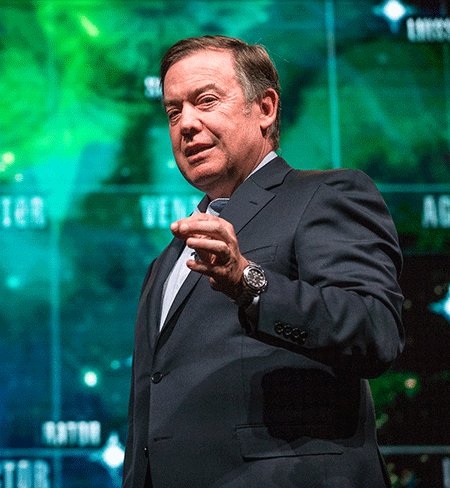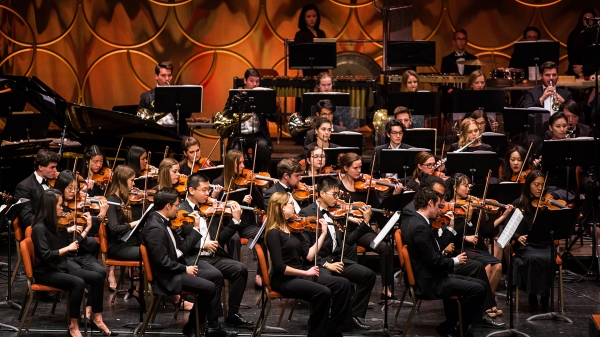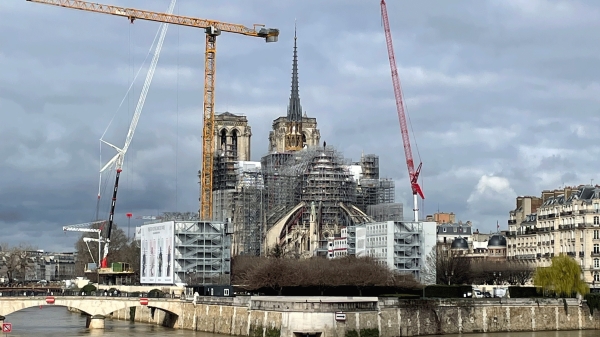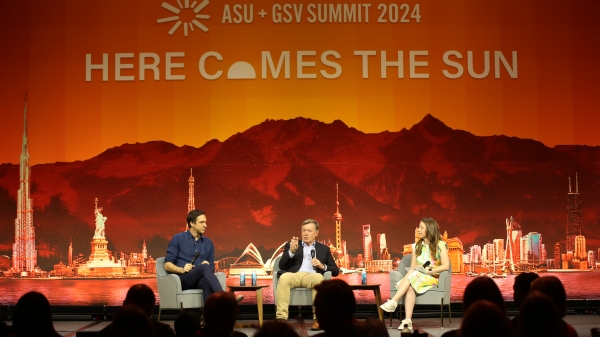ASU's vision of future: Learning across lifespan — anytime, anywhere, any age
Crow: As change accelerates, ASU must be a place where people return again and again to build the skills for multiple, shifting careers

Editor's note: This story is being highlighted in ASU Now's year in review. Read more top stories from 2018 here.
Arizona State University is setting out to disrupt the old concept of higher education by offering learning to everyone across the lifespan.
The university is already working to harness virtual reality and emerging technologies as it advances toward a “national service university” prototype, according to ASU President Michael Crow.
He laid out the university’s vision of the future Thursday in a TED Talk-style discussion at the new Student Pavilion on the Tempe campus.
“You cannot derive the kind of change you want. You have to build a new model,” he said.
After centuries of gradual progress, the velocity of change in our society is accelerating.
“Now we’re seeing change that occurs in single generation — within a person’s lifetime as a worker,” Crow said, showing photos of shoebox-size mobile phones from the 1990s.
“Sixty-five percent of children entering primary school today will ultimately end up working in completely new job types that don’t exist yet” — not just different jobs, but completely different types of jobs, he said.

“Sixty-five percent of children entering primary school today will ultimately end up working in completely new job types that don’t exist yet,” ASU President Michael M. Crow said Thursday. Photo by Charlie Leight/ASU Now
In 2018, the budget is $3.1 billion, the four-year graduation rate is 50 percent (71 percent for A students, 46 percent for B students) and ASU is ranked 22nd in research expenditures, with $545 million annually (ahead of No. 26 Ohio State University and No. 28 UCLA). Crow showed how far ASU has come, going back to 1988, when the university’s budget was $415 million and the four-year graduation rate was about 14 percent. Then, ASU was ranked 105th in research expenditures (behind such schools as No. 69 Hawaii-Manoa and No. 94 Mississippi State).
In 1988, the state invested $9,770 per student (in 2017 dollars) and in 2018, the state spends $3,141 per student.
Crow said that the current funding from the state covers about a third of the cost to educate an in-state student, and he would like to see that investment increase to about half the cost.
“We can make up the rest with the institution operating in the knowledge market, the research market and the international student market,” he said.
“And every once in a while, we’d like two miles of freeway. For the cost of two miles of freeway, we can build these ‘Star Trek’-type research buildings, and out of that comes everything you can possibly imagine,” he said.
“And after that we want to be held accountable for what we do, driven toward a certain set of goals and then to be left alone.”
Crow noted that over the past 30 years, ASU’s student body has evolved to more closely reflect the demographics of the state, with 50 percent of the current freshman class made of underrepresented minorities, compared with about 10 percent in 1988. The percentage of undergraduates who qualify for the federal Pell Grant rose from less than 3 percent 30 years ago to 34 percent now.
Thirty years from now, by 2048, ASU will have created new ways of engaging with learners through technology, he said. But not recklessly.
“We do need to be careful about technology. We’re finding ways to enhance learning, not replace learning. We’re finding ways to enhance reality, not replace reality,” he said.
The new “national service university” model will be less rigidly connected to age than the current system of preschool and then K-12 followed by technical school or university and then a career.
“We’re evolving a model capable of being of service to all learners, at all stages of work and learning, from all socioeconomic backgrounds, through education, training and skill-building opportunities,” he said.
The university will be a “knowledge core” that offers its resources in different ways, digitally or immersive, to typical and nontraditional students across the lifespan, short term or constant. Content would be personalized, collaboration would be global and advising would rely on artificial intelligence.
ASU is already doing this. More than 10,000 students have accessed the Me3 app, which uses an algorithm to help students hone in on a career and college path. The Global Freshman Academy is a series of online first-year university courses that can be taken for free and paid for only if credit is desired. An interdisciplinary student team is working on Axio, a “friendly AI companion.”
Video by Ken Fagan/ASU Now
The new way of learning would help people who never finished college, Crow said.
“There’s a pejorative term in higher education to make us feel superior to other people: dropout. Those are the people who should call us failures. We failed the student, and we make it almost impossible for that person to go back and finish college,” he said.
Crow said that with change happening so fast, the goal is to create lifelong learners, with the university a place where anyone, regardless of age or location, can learn “anytime, anywhere, anything that you want.”
“I hope to be part of a team capable of building these learning platforms where it doesn’t make any difference how old you are, you’re able to learn any topic at any speed.”
Top photo: ASU President Michael M. Crow speaks onstage at a community conversation at the Student Pavilion on the Tempe campus Thursday evening. Photo by Charlie Leight/ASU Now
More Arts, humanities and education

ASU Symphony Orchestra welcomes visionary conductor Jonathan Taylor Rush
Guest conductor Jonathan Taylor Rush will join Arizona State University’s Jason Caslor, director of bands, to lead the ASU Symphony Orchestra in their final concert of the season, “Trailblazers,” on…

Chemistry classes are key to art student's success
Amanda Barnette has a passion for art preservation. That means that, for the past four years, the Arizona State University student’s schedule was filled with classes that fit her artistic bent:…

ASU+GSV Summit tackles big questions about AI, technology, education
Editor's note: We'll be updating this story daily throughout the summit. The annual ASU+GSV Summit kicked off in San Diego on Sunday, drawing thousands of leaders for a four-day event that focuses…